 Research Article
Research Article
Flare-Up Incidence After Using Nano Zinc Oxide Eugenol as Biocompatible Dressing in Reversible Pulpitis: A 3 Years Follow Up Study
Howlader MR1*, Zannat TA2, Major WB kallol3, Gobinda CD4, Islam L5 and Islam R6
1Associate Professor, Dept. of Conservative Dentistry & Endodontics, Faculty of Dentistry, Bangabandhu Sheikh Mujib Medical University, Dhaka, Bangladesh
2Dental Surgeon, University Dental College & Consultant, Smile Dental Surgery, Dhaka, Bangladesh
3Dental surgeon, Dental Wing, Combined Millitary Hospital, Dhaka, Bangladesh
4Dental Surgeon, University Dental College & Consultant, Smile Dental Surgery, Dhaka, Bangladesh
5Clinical Student, Dental Unit, Sher-E Bangla Medical College, Bangladesh
6Clinical Student, Dental Unit, Mymensing Medical College, Bangladesh
Dr. Md. Mujibur Rahman Howlader, Associate Professor, Dept. of Conservative Dentistry & Endodontics, Faculty of Dentistry, Bangabandhu Sheikh Mujib Medical University, Dhaka, Bangladesh.
Received Date:November 02, 2022; Published Date:November 16, 2022
Abstract
Reversible pulpitis usually managed by conventional Root Canal Therapy (RCT) in our traditional endodontic practice. Considering biological integrity it is not up to the level of recent views. Even after following most advanced technology, many patients have to suffer for post endodontic events. Therefore, the aim of the study was to evaluate the post-treatment flare-up incidence following application of nano technology based materials (NZOE) considering its biological activity and sealing capability in case of reversible pulpitis.
Introduction
Objectives of root canal therapy are to achieve long-term comfort, function, and aesthetics for the patients and prevention of reinfection of tooth by following its appropriate steps like-cleaning, shaping & obturation of the canals of affected teeth [1]. Some patients may report moderate-to-severe pain and/or swelling following root canal treatment. This condition is a frustrating situation for both the patient and doctor which may require an unscheduled emergency visit. The rate of flare-up following root canal therapy (RCT) has been reported to range from 2.53% to 58% [2]. Pack, et al. [3] reported 40% of the patients had postoperative pain 24 hours after RCT and this decreased to 11% after one week [3]. Although the exact reasons for flare-up are not clearly understood, it is accepted that flare-up is a multi-factorial phenomenon and there is no single reason for its occurrence [4]. Microbiological, chemical, mechanical, and host variables can induce pain and swelling following root canal treatment [5]. In addition, history of preoperative pain, gender and age factors, the pre-operative pulp status, the type of tooth, the type of treatment (initial or retreatment), and a history of allergy may all influence the rate of flare-up [6]. Some studies have demonstrated the effect of several factors such as instrumentation technique, type of analgesic, method of analgesic prescription, type of rotary instrument, anesthetic solution, occlusal reduction, and method of root canal filing on incidence of flare up [7, 8].
In obturation of the root canal system, sealer is used to prevent penetration of microorganisms and their by-products. In the other hand, sealer is in direct contact with peri-apical tissues and may cause inflammation, tissue degeneration, and delay in wound healing. Therefore, the ideal root canal sealer should be noncytotoxic, non-mutagenic, and immunologically compatible with peri-apical tissues [9]. Currently, a large variety of sealers with different formulas and physical properties are available for use. However, they all have their limitations. It is difficult to produce a sealer with proper physicochemical properties while being biocompatible for long-term. For many years, zinc oxide-eugenol (ZOE) based sealers have been widely used in endodontic practice. The use of nanotechnology has allowed many developments in dentistry and advances in oral-health related nano material and therapeutic methods [10]. Some of the advantages of using nano particles in endodontic sealers include improving their physicochemical characteristics, enhancing the antibacterial property, better penetration into the dental tubules, decreasing micro-leakage, and increasing biocompatibility [11, 12]. It has been shown that incorporating zinc oxide nano particles enhances the physicochemical characteristics (setting time, flow, solubility, dimensional stability, and radiopacity) of Grossman sealer [12]. Kesler Shvero, et al. [13] demonstrated that epoxy resin-based surfaces with cationic nano particles attracted and sacrificed Enterococcus faecalis. DaSilva, et al. [14] showed that incorporating chitosan nano particles into ZOE sealer reduced the formation of biofilm within the sealer-dentin interface. In addition, it has been reported that nano-ceramic sealer had better cyto-compatibility compared to Endo-seal MTA considering the effects on cell spreading and proliferation [15].
Materials and Methods
A cross sectional study was designed to evaluate the efficacy of nano zinc oxide eugenol (NZOE) on 42 patients presented with reversible pulpitis in molar teeth. After signing the written consent form the patients were diagnosed as reversible pulpitis due to caries along with radiographic evidences and spontaneous pre-treatment pain. Patients of both sexes with age range of 12-61 years were selected for this study at Smile Dental Surgery, Dhaka, Bangladesh. In order to performed a biological approach of endodontic management with the application of NZOE biocompatible dressing, the affected teeth were cleaned with therapeutic application of 5.25% Sodium hypo-chloride (NaOCl), followed by 2% Chlorhexidine (C22H30Cl2N10) and normal saline (0.9% NaCl) as irrigation solution. After cleaning and removal of smear layer with the help of ultrasonic device, the cavity was dried with sterile cotton roll. A multi dressing process was followed after therapeutic measures with anti-microbial and anti-inflammatory drugs with instruction of 1% povidone iodine mouth rinsing. A periodic follow up was done up to patients symptoms were disappeared with temporary restoration. A bioactive therapeutic material MTA was used finally with permanent restoration by Glass-inomer cement (GIC) or Ceramics as per-patients choice.
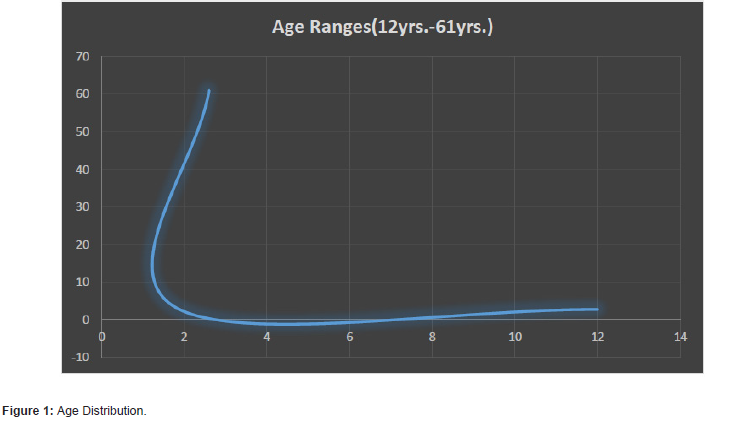
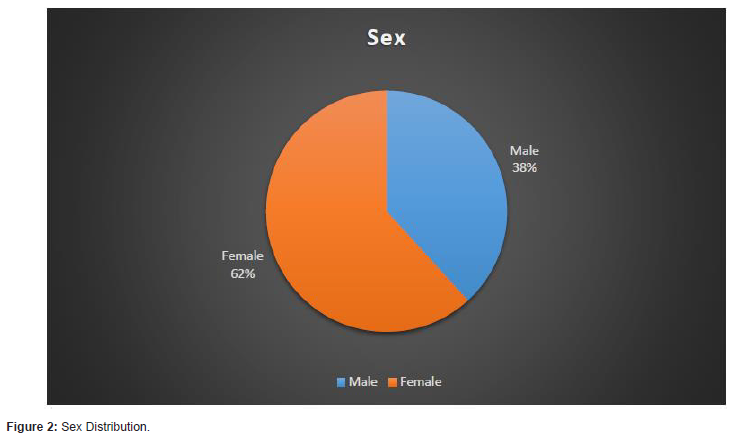

Results
Based on the inclusion and exclusion criteria, a total of 42 patients were eligible to participate in the study. The procedure of regenerative endodontic approach was completed with multi visit technique. Finally, 42 patients were included for data analysis. The age and sex distribution of patient was reported in Figure 1. None of the patients had pain on palpation, percussion and spontaneous pain at the treatment visit. The results showed that at the 24h following treatment, the patients receiving NZOE as dressing had experienced lower pain. None of the patient had swelling during the 48h period following treatment. The ultimate outcome of the treatment procedure is 80% successful, 12% doubtful and 8% failure in terms of 3 years periodic follow up.
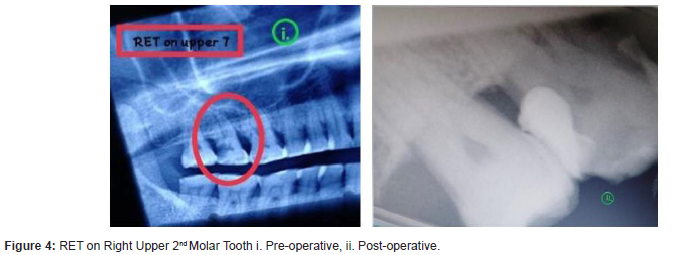
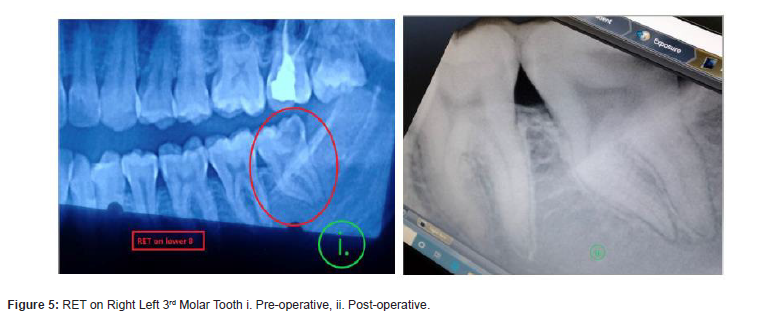
Discussion
In the present study, the results of multi-visits biocompatible dressing with nano zinc oxide eugenol (NZOE) mixed with cotton applied into the deep carious cavity of affected tooth diagnosed as reversible pulpitis. Evaluation of the procedure after repeated application of the dressing was done periodically with the clinical and radio graphic parameters. The results of a systematic review showed that during 1st 48 hours after receiving treatment, postoperative pain decreased significantly [16]. Various methods were used for evaluation the effect of different variables on post-operative endodontic pain by different authors. In the present study, a VAS was used to compare postoperative pain intensity because it is a simple tool with high reliability and validity and more sensitive to small changes than descriptive ordinal scales8. There are some studies on the effect of irrigation type [17] and irrigation concentrations [18] on endodontic flare up but no study was evaluated the relationship of endodontic biocompatible dressing and flare up. Toxic effects of the products and a pressure phenomenon from the presence of biocompatible dressing with nano zinc oxide eugenol (NZOE) mixed with cotton can initiate an inflammatory process and tissue damage and lead to flare up [19]. In this study, the most post-operative pain was reported during the 24h after treatment. The direct activation along with the immunologic response may underlie flare-up occurrences. According to the result of the present study and considering the lesser microleakage by prevention of further microbial invention due to its homogenous consistency and better antibacterial property of NZOE [20] and concerning the lower cytotoxicity of NZOE [21-23] can be applied in the process of regenerative endodontic approaches in reversible pulpitis.
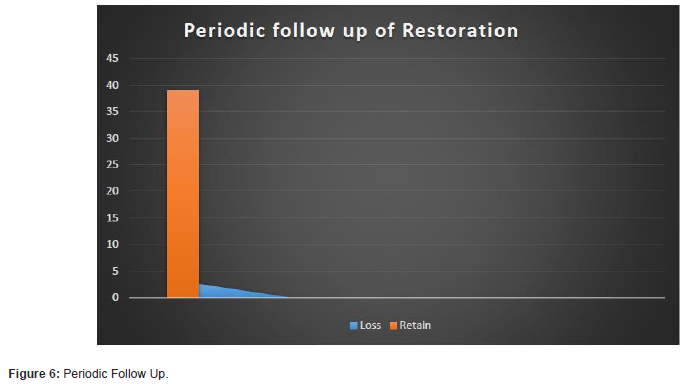
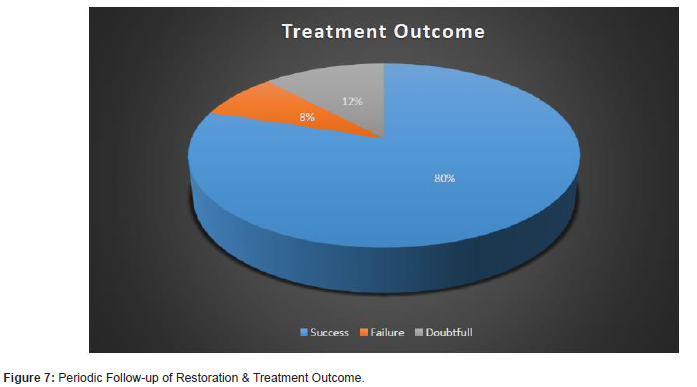
Conclusion
Reversible pulpitis usually managed by conventional Root Canal Therapy (RCT) in our traditional endodontic practice. Considering biological integrity it is not up to the level of recent views. Even after following most advanced technology, many patients have to suffer for post endodontic events. As the flare up incidence of Root Canal Therapy is 2.53% to 58% in different study reports, a biological approach of modern regenerative endodontic procedure would be much more appropriate by application of nano technology based materials (NZOE).
Acknowledgement
None.
Conflict of Interest
Author declares no conflict of interest.
References
- Torabinejad M, White SN (2016) Endodontic treatment options after unsuccessful initial root canal treatment: Alternatives to single-tooth implants. J Am Dent Assoc 147: 214-220.
- Sathorn C, Parashos P, Messer H (2008) The prevalence of postoperative pain and flare-up in single- and multiplevisit endodontic treatment: a systematic review. Int Endod J 41: 91-99.
- Pak JG, White SN (2011) Pain prevalence and severity before, during, and after root canal treatment: a systematic review. J Endod 37: 429-438.
- Sipavičiūtė E, Manelienė R (2014) Pain and flare-up after endodontic treatment procedures. Stomatologija 16: 25-30.
- Al-Razhi B, Fadag A, Alqutaibi AY (2018) Limited Evidence Suggests that Single-visit RCT may have a similar risk of long-term complications but a higher risk of Flare- Ups compared with multiple-visit endodontic treatments. J Evid Based Dent Pract 18: 243-245.
- Nair M, Rahul J, Devadathan A, Mathew J (2017) Incidence of Endodontic Flare-ups and Its Related Factors: A Retrospective Study. J Int Soc Prev Community Dent 7: 175-179.
- Su Y, Wang C, Ye L (2011) Healing rate and post-obturation pain of single- versus multiple visit endodontic treatment for infected root canals: a systematic review. J Endod 37: 125-132.
- Parirokh M, Rekabi AR, Ashouri R, Nakhaee N, Abbott PV, et al. (2013) Effect of occlusal reduction on postoperative pain in teeth with irreversible pulpitis and mildtenderness to percussion. J Endod 39: 1-5.
- Badole GP, Warhadpande MM, Meshram GK, Bahadure RN, Tawani SG, et al. (2013) A comparative evaluation of cytotoxicity of root canal sealers: an in vitro study. Restor Dent Endod 38: 204-209.
- Ozak ST, Ozkan P (2013) Nanotechnology and dentistry. Eur J Dent 7: 145-151.
- Saunders SA (2009) Current practicality of nanotechnology in dentistry. Part 1: Focus on nanocomposite restoratives and biomimetics. Clin Cosmet Investig Dent 1: 47-61.
- Versiani MA, Rached Junior FJA, Kishen A, Pécora JD, Silva Sousa YT, et al. (2016) Zinc Oxide Nanoparticles Enhance Physicochemical Characteristics of Grossman Sealer. J Endod 42: 1804-1810.
- Kesler Shvero D, Zaltsman N, Weiss EI, Polak D, Hazan R, Beyth N (2016) Lethal bacterial trap: cationic surface for endodontic sealing. J Biomed Mater Res A 104: 427-434.
- DaSilva L, Finer Y, Friedman S, Basrani B, Kishen A (2013) Biofilm formation within the interface of bovine root dentin treated with conjugated chitosan and sealer containing chitosan nanoparticles. J Endod 39: 249253.
- Collado González M, García Bernal D, Oñate Sánchez R, Ortolani Seltenerich P, Lozano A, et al. (2016) Biocompatibility of three new calcium silicate‐based endodontic sealers on human periodontal ligament stem cells. Int Endod J 50: 875- 884.
- Pak JG, White SN (2011) Pain prevalence and severity before, during, and after root canal treatment: a systematic review. J Endod 37: 429-438.
- Zarei M, Bidar M (2006) Comparison of two intracanal irrigants effect on flare-up in necrotic teeth. Iran Endod J 1: 129-132.
- Farzaneh S, Parirokh M, Nakhaee N, Abbott PV (2018) Effect of two different concentrations of sodium hypochlorite on postoperative pain following single-visit root canal treatment: a triple- blind randomized clinical trial. Int Endod J 51 Suppl 1: e2-e11.
- Froes FG, Miranda AM, Abad Eda C, Riche FN, Pires FR (2009) Non-surgical management of paraesthesia and pain associated with endodontic sealer extrusion into the mandibular canal. Aust Endod J 35: 183-186.
- Rad MS, Kompany A, Zak AK, Javidi M, Mortazavi S (2013) Microleakage and antibacterial properties of ZnO and ZnO: Ag nano powders prepared via a sol-gel method for endodontic sealer application. J Nanopart Res 15: 1925.
- Omidi S, Javidi M, Zarei M, Mushakhian S, Jafarian A (2016) Subcutaneous Connective Tissue Reaction to a New Nano Zinc Oxide Eugenol Sealer in Rat Model. Iran Endod J 1: 64-69.
- Javidi M, Zarei M, Omidi S, Ghorbani A, Gharechahi M, et al. (2015) Cytotoxicity of a new nano zinc-oxide eugenol sealer on murine fibroblasts. Iran Endod J 10: 231.
- Javidi M, Dastmalchi P, Zarei M, Shayani Rad M, Ghorbani A (2017) In Vitro Cytotoxicity of a New Nano Root Canal Sealer on Human Gingival Fibroblasts. Iran Endod J 12: 220-225.
-
Howlader MR*, Zannat TA, Major WB kallol, Gobinda CD, Islam L and Islam R. Flare-Up Incidence After Using Nano Zinc Oxide Eugenol as Biocompatible Dressing in Reversible Pulpitis: A 3 Years Follow Up Study. On J Dent & Oral Health. 6(3): 2022. OJDOH.MS.ID.000638.
-
Root canal therapy, Endodontic practice, Tooth, Molar teeth, Dental surgery, Endodontic management, Temporary restoration, Lower pain, Biocompatible dressing, Nano technology based materials.
-

This work is licensed under a Creative Commons Attribution-NonCommercial 4.0 International License.






